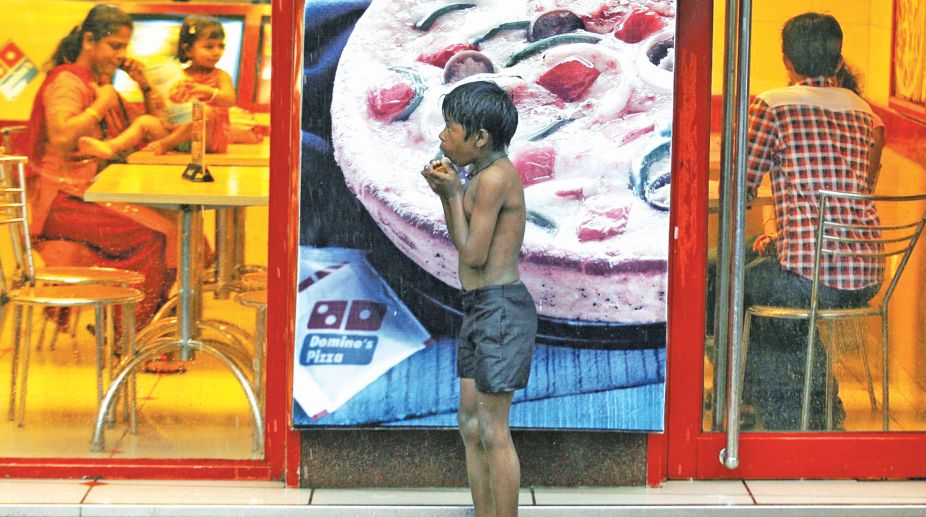Pre-monsoon survey launched in Satyamangalam Tiger Reserve
Around 300 personnel commenced the exercise in 10 ranges in the Sathyamangalam Division and in Hasanur Division that comes under the STR.

Representational Image.
The obsession with GNP-maximizing model of development has led to the neglect of important social, ecological and spiritual issues which can prove very costly and harmful.
Hence there is a yearning among increasing number of people for alternative models of development and in this context, we propose a distress minimizing model of development.
Advertisement
The defining feature of this model is that here the reduction of distress is the core issue, it is at the centre of all other discussions and questions. While in a GNP-maximizing model the ways and means of maximizing GNP growth constitute the core issue around which other issues revolve, in our model distress reduction is the central issue and other issues are examined only in relation to this central issue.
Advertisement
In this model, in the economic context the main issue relates to the satisfaction of basic needs of all people. Whether very rich people get more income or very poor get more income may be the same in the model of maximizing GNP, but this is not the case in the model of minimizing distress.
Increasing income of the poor contributes greatly to reducing distress but increasing income of rich sections does not contribute at all to reducing distress. Hence increasing the income of the poorest sections becomes a crucial issue in the model of minimizing distress. Similarly, the reduction of inequalities also becomes a crucial issue in this model.
At the same time, distress and happiness in daily life are frequently related to our close social relationships – our families, close friends, workplace colleagues and neighborhood relationships. How these relationships work out on a daily basis often has the most influence on happiness and/or distress that we experience in a day, and the happiness and/or distress that we contribute or cause to others in a day.
So, a key question is how and in what ways our social relationships are likely to cause distress to us and to others and how to try to reduce this possibility as well as increase happiness in social relationships. One example is how better understanding can lead to improved gender relationships, contributing enormously to reducing distress.
Similarly, there are enormous possibilities of reducing distress in other relationships. Relationships of dominance should end, while relationships of care, compassion and co-operation should be encouraged in various ways. Fiercely competitive relationships need to be replaced by relationships of close co-operation.
Improving social relationships is one of the most important tasks, yet one of the most neglected. The effort should be to improve relationships at a deeper level and in durable ways, and not merely in terms of making a show of it. The improvement of social relationships should be an integral part of education both at the family and school (plus college) level.
Two important clarifications need to be made at this stage. In this model do we include only reduction of distress of human beings or are our concerns wide enough to include distress of all forms of life.
Other forms of life whether mammals, birds, amphibians, aquatic, insects, reptiles or others also feel pain and suffering. There should be no doubt that we should give adequate attention also to reducing their distress.
Earth is for all forms of life, not just for human beings, and as the most capable species clearly our relationships with other forms of life should be one of protective care.
The other classification relates to time-periods. Should our concerns be limited to minimizing distress in present times or should we be more or less be equally concerned with reducing distress in future, or reducing the distress of future generations (i.e. our children and grandchildren etc.). Clearly our concern should be to minimize the distress of future generations as well.
This brings us closely to the great need for concerns relating to sustainable development and environment protection which should be integral and important aspects of the model of minimizing present and future distress of all forms of life. Unfortunately, the very relevant word ‘sustainable’ is being reduced to a mere cliché but we use it here with all sincerity.
While we can try as much as possible to reduce distress, some forms of distress will always remain. We need to distinguish between avoidable and unavoidable distress. Almost all of us will experience the permanent loss of some near and dear ones, particularly those elder to us, in the course of our lives.
So, some distress is unavoidable. While trying to minimize distress, we also need the ability to bear unavoidable distress (or distress over which we have no control to reduce or limit it) with equanimity and without any breakdown, in the process also increasing the strength of others to do so.
This brings us close to wider spiritual concerns which need to be an integral part of any comprehensive effort to minimize distress. Spirituality is also of critical importance for understanding why and how any approach to life based on instant gratification and consumerism can actually result in increasing rather than reducing distress in various ways and at various levels.
Clearly the model of minimizing distress provides a much more credible and reliable basis for human progress compared to the model based on maximizing GNP.
The writers are freelance journalists and researchers who have been close to social movements and initiatives.
Advertisement